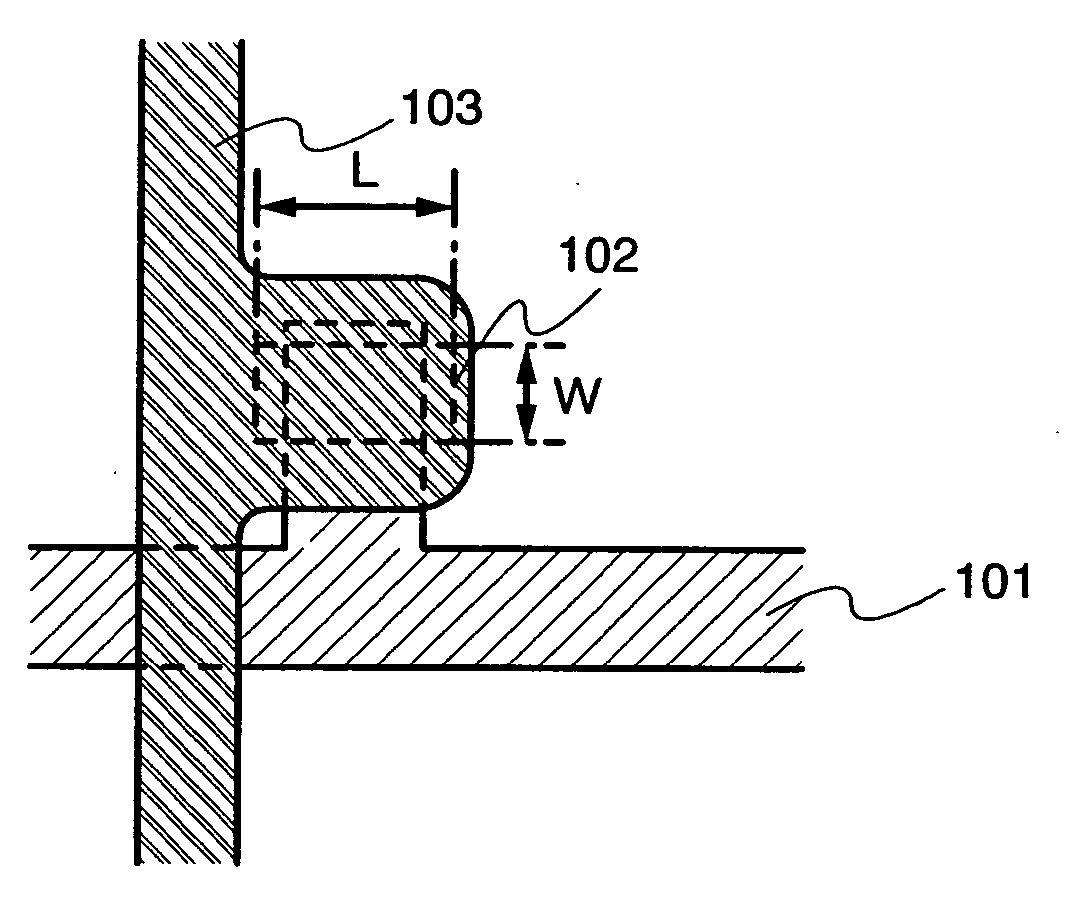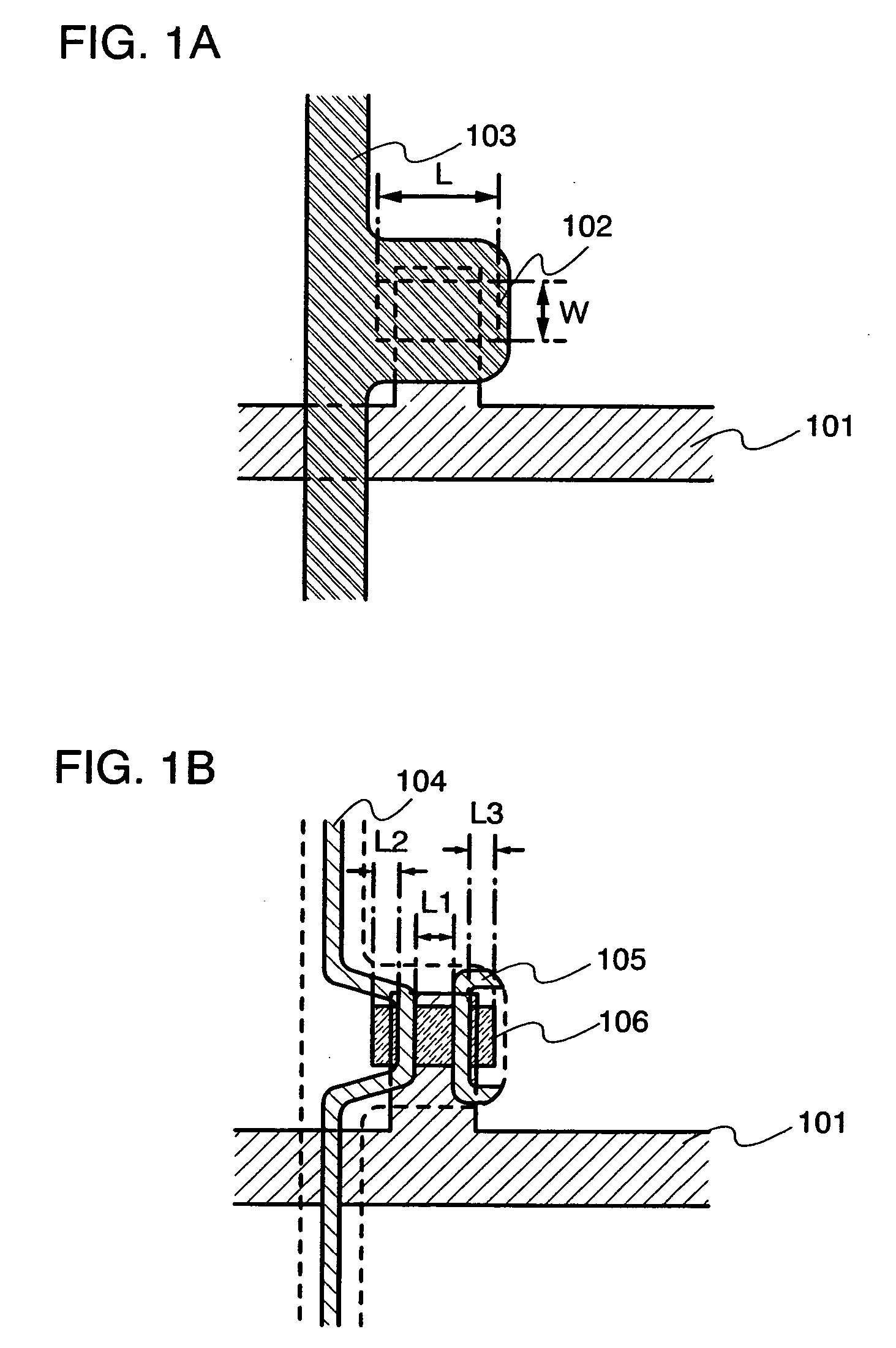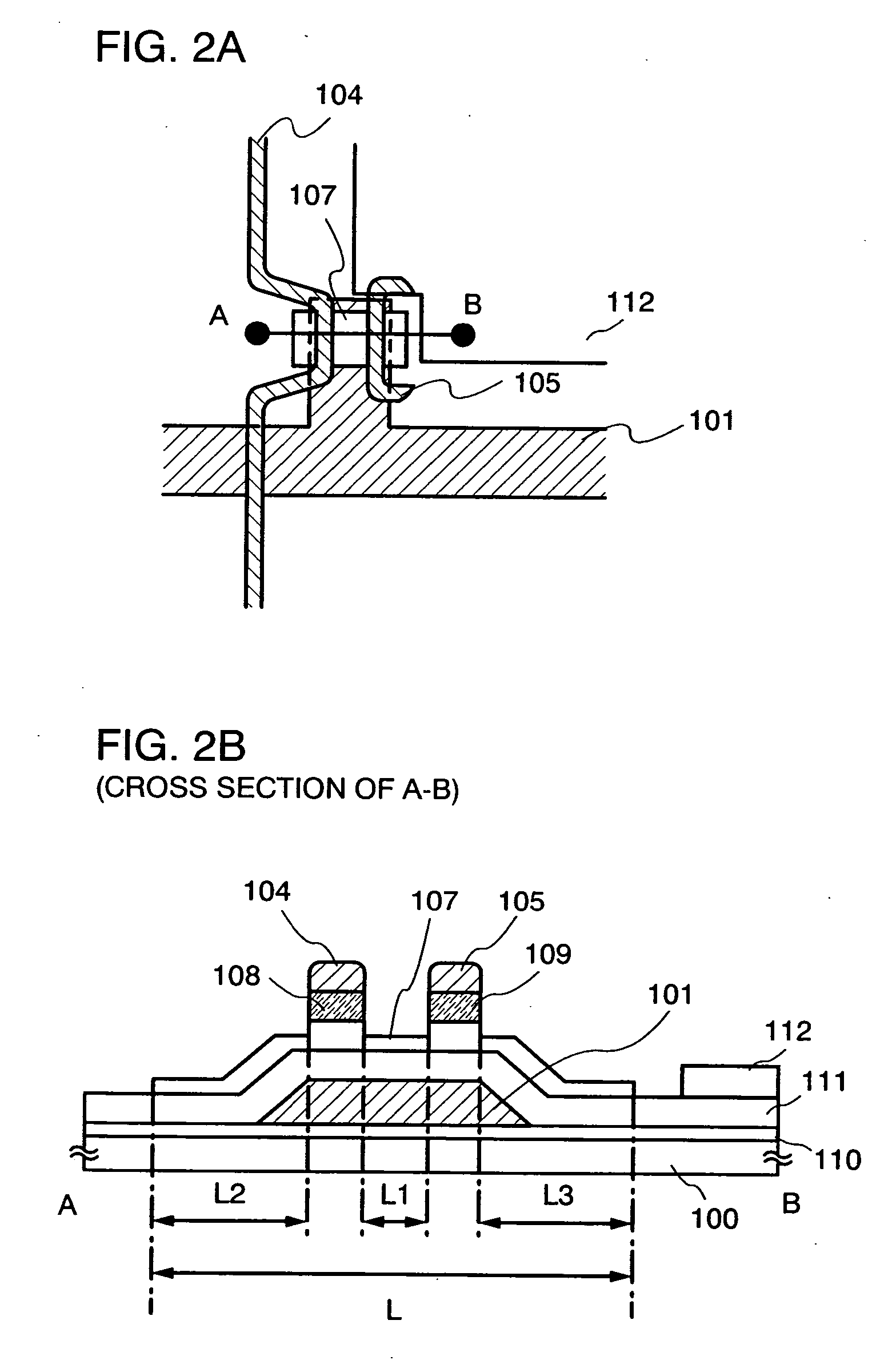Electronic device, semiconductor device and manufacturing method thereof
a technology of semiconductor devices and electronic devices, applied in the field of semiconductor devices, can solve the problems of increasing the waste of liquid or losing a material solution, and achieve the effect of reducing the pattern size of the semiconductor layer
- Summary
- Abstract
- Description
- Claims
- Application Information
AI Technical Summary
Benefits of technology
Problems solved by technology
Method used
Image
Examples
embodiment mode 1
[0051] Here, a manufacturing example of an active matrix type display device using a channel-etch type TFT as a switching element, is shown in FIGS. 1A, 1B, 2A and 2B.
[0052] A base insulating film 110 is formed over a substrate 110 having an insulating surface. A base film made of an insulating film such as silicon oxide, silicon nitride, silicon oxynitride, or silicon nitride oxide is formed as the base insulating film 110. If it is not necessary, there is no particular need to form the base insulating film.
[0053] In addition to a non-alkaline glass substrate such as barium borosilicate glass, alumino borosilicate glass, or aluminosilicate glass manufactured by a fusion method or a floating method, a plastic substrate having a heat resistance that can withstand a processing temperature in this manufacturing process, or the like can be used for the substrate 100.
[0054] Thereafter, a conductive film having a thickness of 100 to 600 nm is formed by a sputtering method over the base...
embodiment mode 2
[0087] An example of manufacturing an active matrix display device having a channel-stop type TFT as a switching element with reference to FIGS. 4A, 4B, 5A and 5B.
[0088] As in Embodiment Mode 1, a base insulating film 510 is formed over a substrate 500 having an insulating surface. A base film made of an insulating film such as silicon oxide, silicon nitride, silicon nitride oxide or silicon oxynitride is formed as the base insulating film 510. If it is not necessary, there is no particular need to form the base insulating film.
[0089] Thereafter, a conductive film having a thickness of 100 to 600 nm is formed by a sputtering method over the base insulating film 510. The conductive film may be formed with a single layer of an element selected from Ta, W, Ti, Mo, Al or Cu, or an alloy material or a compound material mainly containing such an element, or a stacked layer thereof. In addition, a semiconductor film typified by a polycrystalline silicon film doped with an impurity elemen...
example 1
[0116] An active matrix type liquid crystal display device can be manufactured using a TFT shown in Embodiment Mode 1 or Embodiment Mode 2 as a switching element.
[0117] A manufacturing method of an active matrix liquid crystal display device using a TFT shown in Embodiment Mode 2 as a switching element is shown hereinafter. FIG. 6 shows an example of an active matrix liquid crystal display device. Note that similar portions in FIG. 6 to those in Embodiment Mode 2 are represented by the same reference numerals as those in Embodiment Mode 2.
[0118] An insulating film 513 is formed after forming the source wiring 504 and the drain wiring 505. A contact hole is formed in the insulating film 513 and an electrode 512 serving as a pixel electrode is formed. A transparent conductive film is used for the electrode 512.
[0119] Then, an orientation film 530 is formed to cover the electrode 512. A droplet-discharging method, a screen printing method or an offset printing method may be adopted ...
PUM
 Login to View More
Login to View More Abstract
Description
Claims
Application Information
 Login to View More
Login to View More - R&D
- Intellectual Property
- Life Sciences
- Materials
- Tech Scout
- Unparalleled Data Quality
- Higher Quality Content
- 60% Fewer Hallucinations
Browse by: Latest US Patents, China's latest patents, Technical Efficacy Thesaurus, Application Domain, Technology Topic, Popular Technical Reports.
© 2025 PatSnap. All rights reserved.Legal|Privacy policy|Modern Slavery Act Transparency Statement|Sitemap|About US| Contact US: help@patsnap.com



